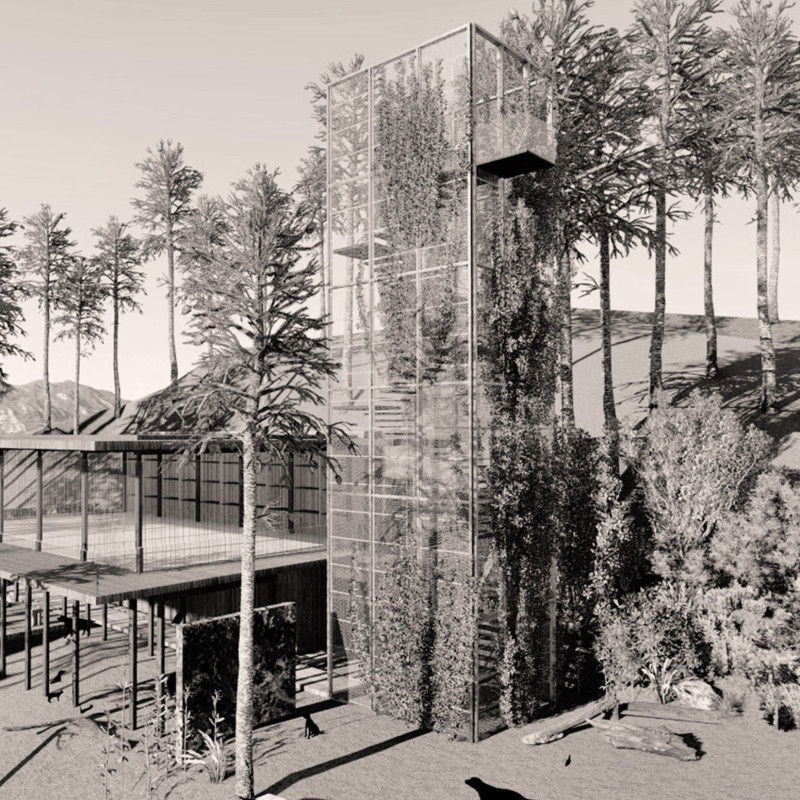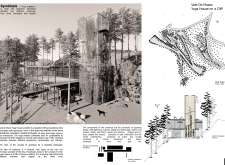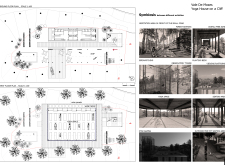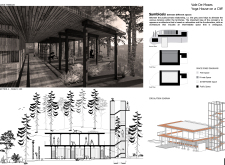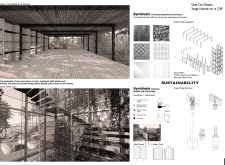5 key facts about this project
Vale de Moses Yoga House is situated in the foothills of the Serra de Estrela mountains in central Portugal. It serves as a retreat space that focuses on well-being, community, and a deep connection with nature. The design reflects the concept of symbiosis, where different elements—including people and nature—work together to create a harmonious environment.
Design Philosophy
The design draws inspiration from Buddhist principles, emphasizing creativity and interaction within the space. This philosophy influences how the areas are organized, allowing for a mix of cultures, technologies, and generational perspectives. The intention is to create an environment that promotes individual peace while fostering a sense of belonging among visitors.
Functional Zoning
The layout includes various zones tailored for specific activities. Meditation areas provide quiet spaces for reflection, while forest bathing spots encourage visitors to immerse themselves in nature. Birdwatching sections offer opportunities to observe local wildlife. The design also features an observatory tower that provides views of the scenic mountains. Dedicated yoga spaces and seating areas contribute to relaxation and mindfulness practices.
Material Use
Materials are selected to enhance both structure and aesthetic. Stone walls provide durability and a solid presence, while timber columns and beams introduce warmth and natural texture. A recycled steel tower emphasizes sustainability, showing a commitment to environmental responsibility. Together, these materials create a tactile experience that connects users with the surrounding landscape.
The design cultivates a mix of public and private spaces, creating what can be understood as a "grey zone." This area blurs boundaries traditionally seen in architecture, inviting people to move freely and engage with their environment. The arrangement of spaces encourages exploration and interaction, allowing visitors to actively participate in their experience. Details like seating areas positioned for optimal views remind users to appreciate the beauty of nature as they engage with the architecture.


